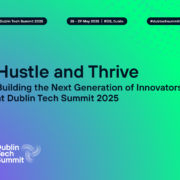Humanizing Automation: The Benefits of a Solution-Focused Approach to Automation in 2021
Automation has quickly become one of the most important aspects of the digital transformation landscape and is on a steep upward trajectory. Automation is being deployed in every department and across all industries worldwide. Who knows, maybe you’re even using it yourself!
A 2020 Mckinsey study of over 1,000 respondents revealed that 66% of businesses are either piloting automation, have fully automated at least one internal workflow, or are scaling automation processes across multiple parts of their business.
It’s no secret that automation allows organizations to streamline their processes and complete more work in a shorter amount of time. But there are a range of automation solutions to choose from. These may include robotic process automation (RPA), application programming interfaces (APIs), or hybrid automation.
These terms may seem technical, but at Wrk, we know that automating processes in general is a lot easier than it may seem! In this post, we’ll take a look at the automation landscape in 2021, tackle some of the pain-points facing organizations in need of automation, and explain how our blended approach to automation could be the optimal solution for your business.
RPA
RPA involves the use of virtual bots to deploy processes when they are given a specific set of instructions. A couple main players in the space include Blue Prism and UO Path. RPA is mostly known for delivering a high volume of work with great speed. As long as instructions have been clearly defined, including any exceptions to rules, there will be no errors. Many companies are introducing RPA to tackle time-consuming tasks that erode efficiency and reduce employee morale. A 2017 Deloitte survey showed that 53% of respondents introduced RPA for processes, with another 19% planning to adopt RPA in the next 2 years.
While RPA offers obvious advantages, There are some drawbacks. Although in the long run RPA can save costs, implementing multiple bots for a range of processes can be quite expensive upfront. What’s more, RPA is not very flexible. You don’t need us to tell you that internal processes continuously change within an organization and these changes can throw off the triggers and rules that have been set out initially within the RPA platform. In some cases, the entire workflow will need to be broken down and recreated. Fixing these processes to operate properly again can be both time-consuming and complicated. Because of its rigid nature, RPA may be suitable if you only want to automate a few tasks, but it’s difficult to scale to several tasks across different departments. . In fact, the 2017 Deloitte report also found only 3% of respondents that implemented RPA were able to expand it to 50 or more bots as their operation grew.
APIs
Application programming interfaces or APIs are integration platforms that connect programs and softwares. Main players in the API field include Zapier and Pipefy. Basically, these platforms allow programs to talk to each other in order to access data, like automating the process of transferring Linkedin leads to Salesforce. One real life example is when you insert a URL into your search browser on the internet. Browsers interact with internet servers to deliver relevant content and information. Similarly, if you have ever used Uber or Lyft then you’ve probably used an API. APIs work in the background when you request a ride, connecting you with a driver, delivering location information to the driver, and also enabling you to track their progress. Similarly, once a certain trigger goes off, your phone alerts you that your driver is here and when your ride is completed, you receive a notification to rate or tip the driver. Pretty cool, right?
In a broad sense, APIs usually require extensive coding knowledge in order to implement. However, when outsourcing API to an integration platform service, the process to implement it is actually relatively easy and fast as it often involves dragging and dropping processes into a workflow. In addition, the cost is relatively low and involves a fixed cost. Unlike RPA, you can make any changes in real-time. That said, APIs do come with their share of pitfalls.
From limited functionality to the amount of work that they can actually complete end-to-end, API platforms often get you 80% of the way there but we all know that the last 20% can be the hardest goal to reach. While RPA can complete the majority of processes, APIs deliver some automation, but the rest of the process remains manual.
One way to solve this problem is to marry RPA and APIs to create a seamless and simple experience. This is the case with the Wrk platform.
A blended automation experience
Both RPA and APIs offer many benefits, but they also have their respective drawbacks. The best path to a simple and successful automation integration is to blend the two onto one unique platform. The Wrk platform combines the power of RPA and APIs to work seamlessly alongside your internal.
Unlike integration platforms, the Wrk platform can automate any type of process. And unlike RPA, the platform is quick and easy to integrate with minimal or no support from IT required. It really is very simple to use, is flexible and allows users to make any necessary changes in real-time, and has low and variable costs.
The Wrk platform breaks down each part of a process into simple, repeatable, and manageable micro-tasks through Wrkflow Splitting. Rather than piecing together the drag and drop connectors of other integration platforms, users can drag and drop the entire process from end-to-end. While most other platforms utilizing APIs and RPA can automate some or all of the process, they can’t do it all. The Wrk platform is able to automate processes up to 100%.
What’s more, the platform runs multiple steps of a process or Wrkflow at the same time, through parallel running. This expedites delivery while maintaining quality results you can count on.
Blending RPA and APIs with your team will empower your business overall towards long-term growth rather than mere short-term solutions.
The best of all worlds
Digital transformation will only continue to accelerate moving forward, and with that, the need to automate processes will continue to grow. If the past year has taught us anything at all, it is that businesses need to pivot quickly to adapt to any and all changes that may occur.
Some departments, like customer service and customer support, will be forever changed due to the pandemic, with the need to deliver services to customers wherever they are. With ecommerce sales at an all-time high, on-demand services like chatbots and virtual assistants are necessary now more than ever.
All departments from sales, to marketing, to HR will need to develop new strategies that contribute to the bottom line. But the daily tasks that are time-consuming and tedious will never disappear. By completing these tasks for you, Wrk’s unique approach to automation strives to empower your team by giving them the bandwidth to focus on the bigger picture. And by empowering your team, automation ensures that you and your business are ready for any new challenges and work volume thrown your way.
For us at Wrk, the solutions we offer are more important than whether the platform used is RPA or API. We blend both worlds, and much more besides, to ensure that our clients’ needs are met. After all, at the end of the day, our promise is to maximize the benefits across the value chain for everyone involved with no exceptions. Visit our website today to learn more about how our automation can work for you.





